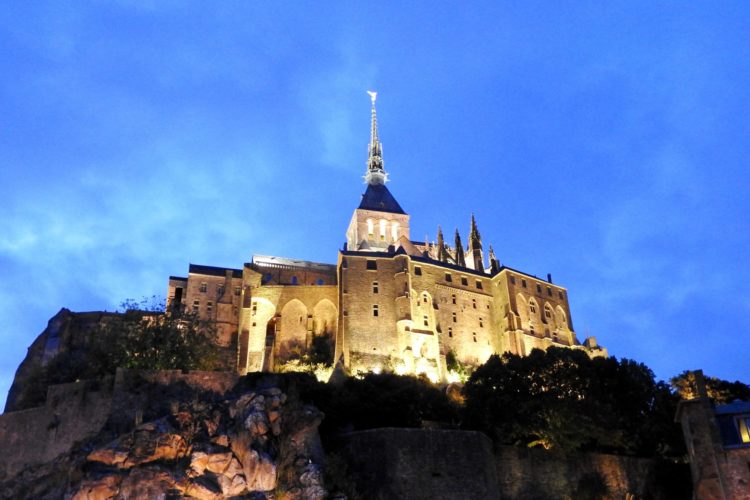
Magical views, eerie otherworldliness, and unexpected screeching: Visiting Mont-Saint-Michel by night
Gothic arches, stone walls, narrow passages, cavernous rooms, flickering lights…and periodic screeching followed by glimpses of enormous eagle eyes and sharp talons?
I think I may be forgiven for wondering if I had stumbled onto the set of a some kind of medieval slasher flick. But no, I had indeed made my way to the abbey at Mont-Saint-Michel. Only it was not quite what I had expected.
Mont-Saint-Michel, a rocky islet lying about half-a-mile off the northwest coast of France, is one of France’s most popular tourist attractions, and it has an even longer history of welcoming that medieval ancestor of the tourist, the pilgrim.
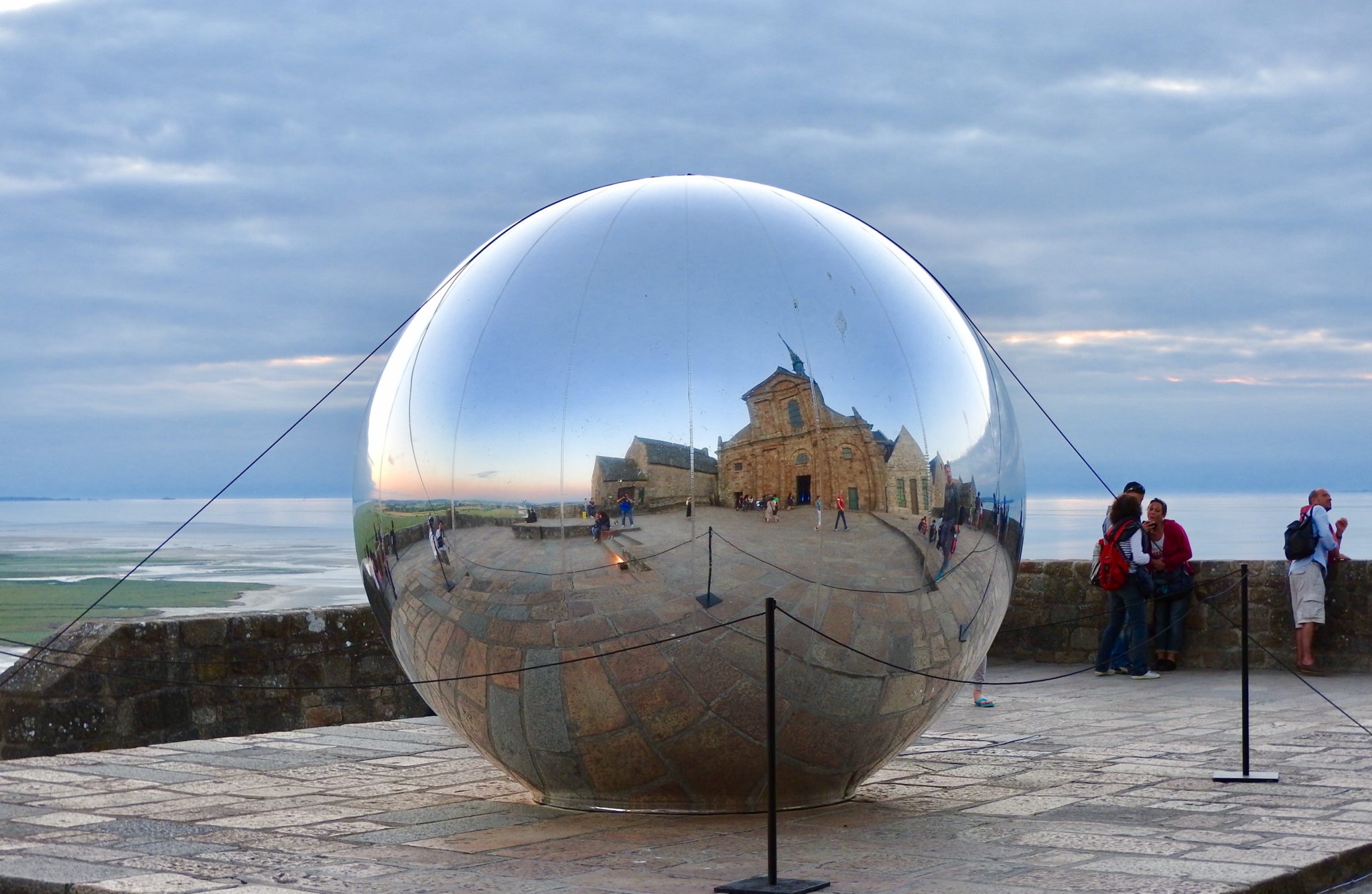
The entire Mont–town and abbey–reflected in a spherical mirror set atop the abbey ramparts.
The name (“Saint Michael’s Mount” in English) is taken from the story that, in the year 708, the Archangel Michael appeared to the local bishop and instructed him to build a church on the tiny island. Over the next several centuries, a monastery and various other buildings followed.

A relief in the abbey depicting the Archangel Michael appearing to Aubert, bishop of Avranches (later Saint Aubert) and instructing him to build at abbey atop the mont. The burst of light at the top isn’t a photography failing on my part, but meant to mimic the shower of light in which angels are always depicted. Really. I planned it that way. Seriously.
Location, Location, Location…
It’s easy to see why this would be an attractive setting for a monastic community. Cut off from the mainland, and too small and rocky to support much of a town, the monks were not likely to be distracted from their duties. There is also just something about the place that feels spiritual, as if it being a place of prayer and a site of pilgrimage were the most obvious thing in the world.
I read once how the Germanic tribes–when they were still pagan–believed that the mountains belonged to the gods, and that, after adopting Christianity, they maintained this association by dedicating mountain chapels to the angels. I have no idea if this has any connection with Mont-Saint-Michel (the Franks, who built the first monastery, were of Germanic origin, but the Mont’s Christian community predated them), but I’m not at all surprised that human beings have long associated a divine presence with the island’s quiet and feeling of otherworldliness.
Mont-Saint-Michel’s appeal to visitors is just as easy to see. Situated in the bay, pretty much at the border between Normandy and Brittany, it has a dramatic and awe-inspiring presence. From afar, it gives the impression of a forbidding castle rising from the sea. At high tide, it is completely cut off from the mainland (save for a modern bridge), while at low tide it is surrounded by sand and scrubby grass.
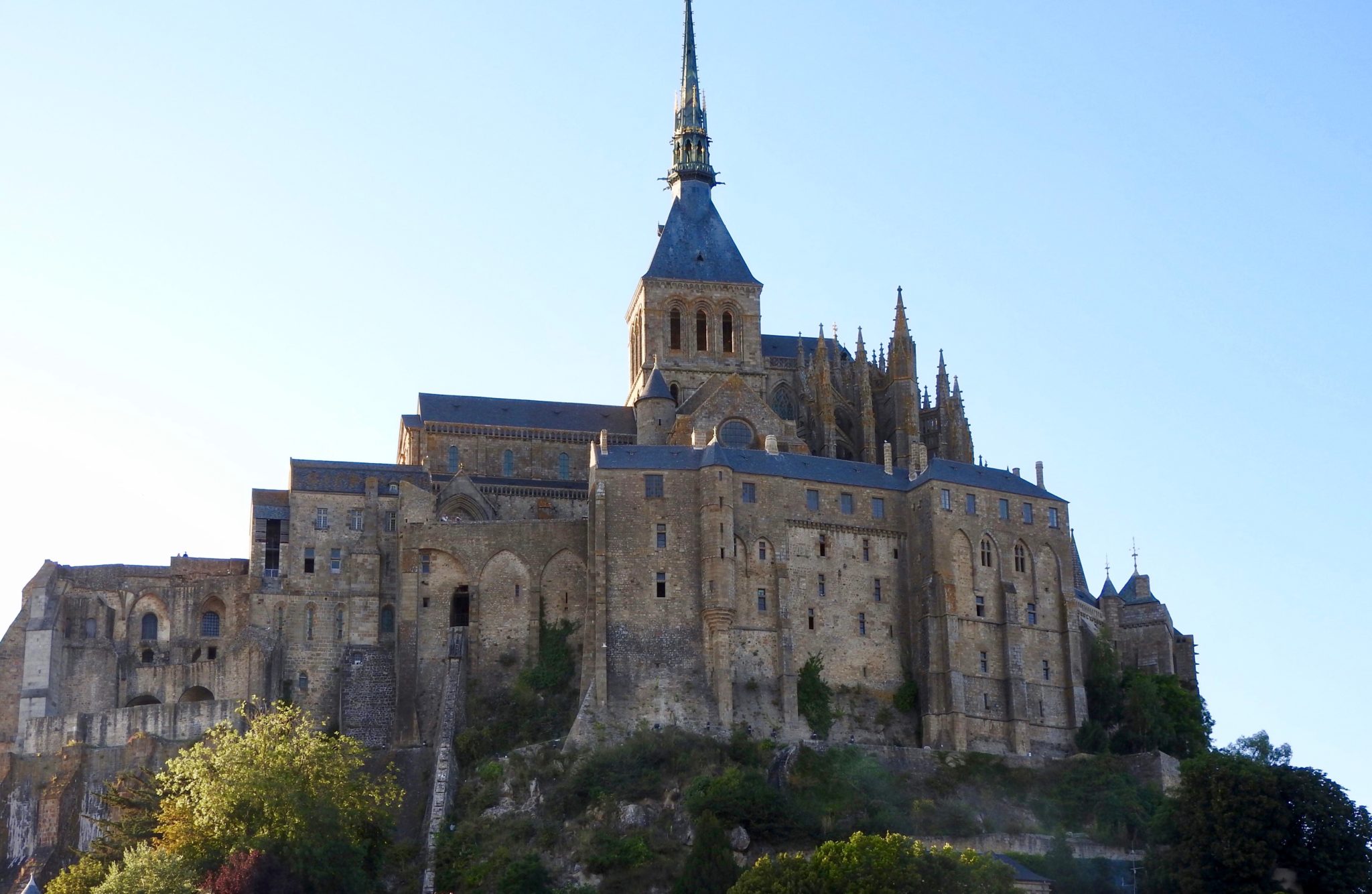
Another view of Mont-Saint-Michel. I hope you think the Mont is as stunning I do, because I took a lot of pictures.
One Thousand Stormy Years
Mont-Saint-Michel’s dramatic setting is matched by a suitably dramatic history. With its limited accessibility and high elevation, it was prized no less for its natural defenses than for its place on the pilgrimage routes. In the thousand years between the fall of Rome (476 C.E.) and the end of the Hundred Years’ War (1453), it bore witness to the clash of armies and cultures that raged across and helped create what we today think of, rather blandly, as “northern France.”
When the Frankish invasions began in the 5th century C.E., there was already a religious community of some sort on the island, possibly founded by a charismatic Irish monk. Though the area’s native Celtic culture had been infused by Roman ways after the conquest of Gaul, Celtic influences remained. These were later reinforced by migrations of Celts from southern Britain, as well as by close commercial and cultural links with Celtic communities throughout the British isles. As the Roman empire fractured, and fractured again, and as Frankish control solidified and Roman Gaul gave way to Frankish Neustria, the isolated Mont served as one of the last strongholds of Gallo-Roman culture.
Today signs of Celtic influence are hard to find. The Franks controlled the region for three centuries and the Mont’s first church, now long gone, dated to their era. Most of the buildings visitors see today were constructed or reconstructed between the 11th and 15th centuries, when the Mont was at the height of its religious and strategic significance.
But it wasn’t the Franks who shepherded the Mont through its glory days. By the 10th century, the entire region was firmly under the control of the new kid on the block, the Normans. Originally Norse chieftains (“men from the north,” hence “Normandy”) who adopted Christianity and some Frankish customs, they dominated the region for centuries to come.
A statue of the Viking conqueror Rollo, in Rouen, the Norman capital, July 2015. In exchange for fertile and strategic territory, Rollo promised the Frankish king he would stop invading his domains. He also accepted Christianity, took the name Robert, and became the first of the counts (later dukes) of Normandy.
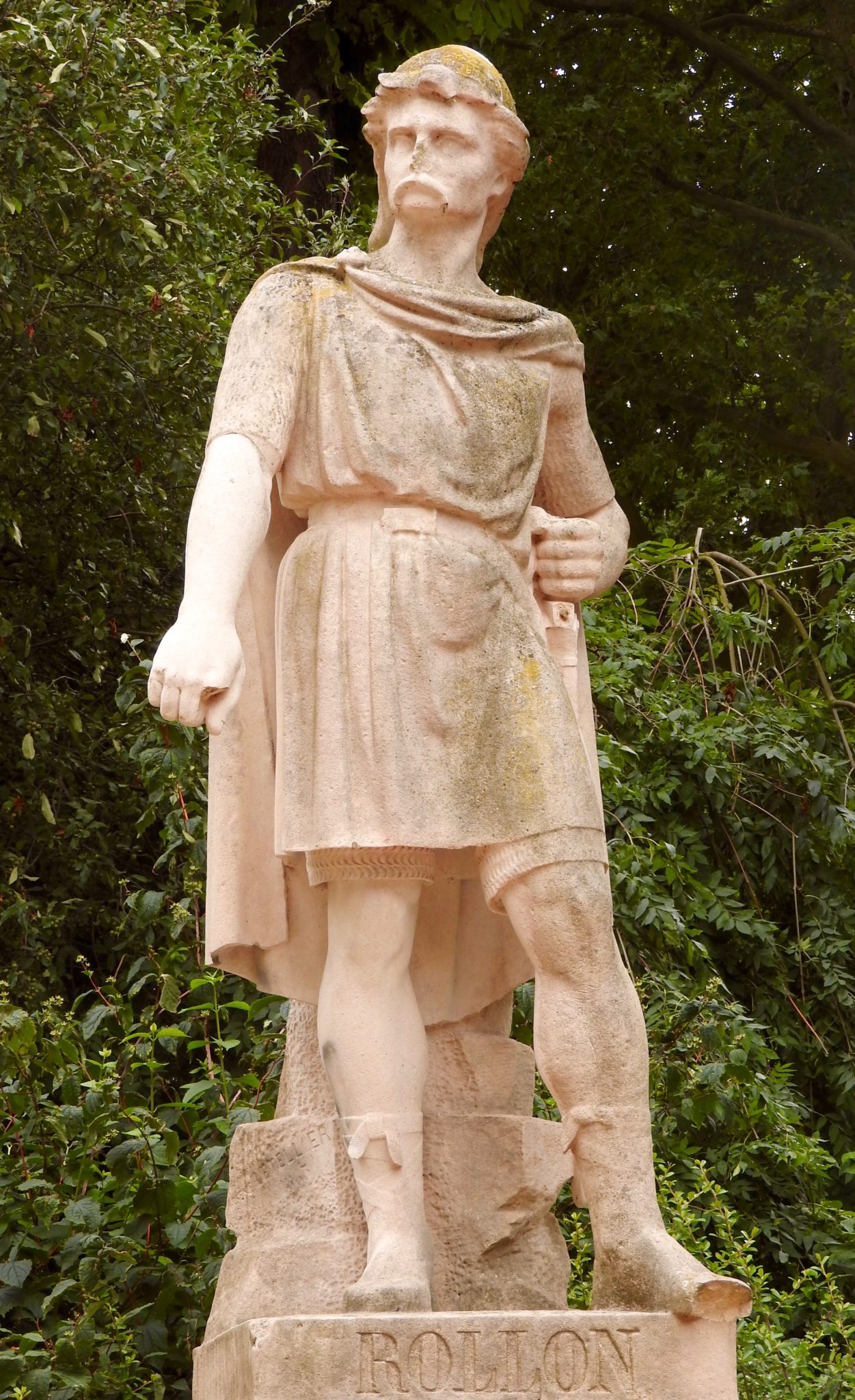
The Norse conqueror, Rollo, financed much of the repair of the abbey and its outbuildings. This was possibly an act of penance (as it had been his attacks that damaged them in the first place), mixed with some savvy politicking. And it worked; the dynasty endured. You’ve probably heard of Rollo’s great-great-great-grandson, a fellow known to history as “William the Conqueror.”
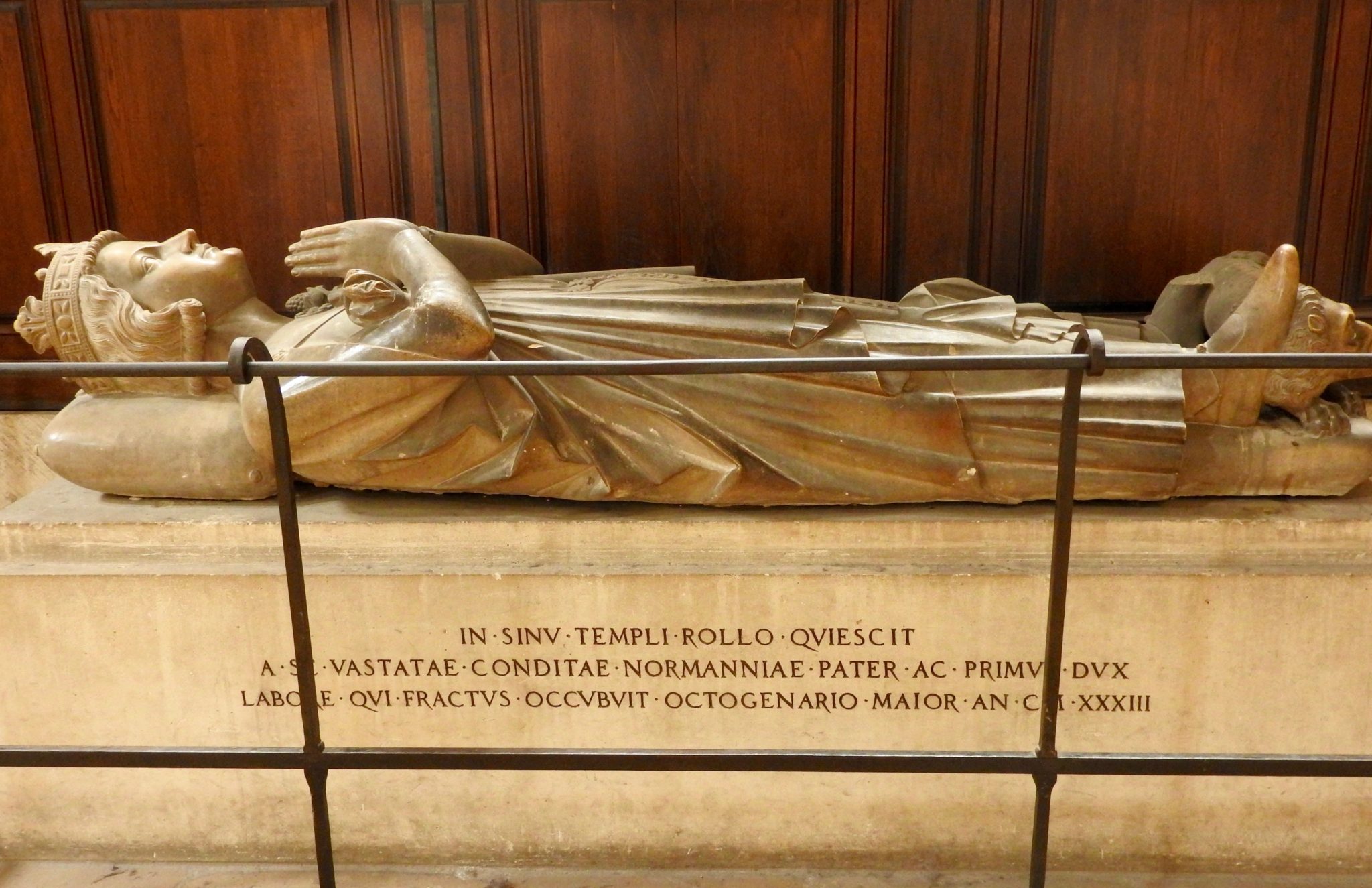
Rollo’s tomb in Rouen Cathedral. Notice how much more “tame” he looks here than when depicted as a Viking. I’m especially amused by his neatly curled hair.
The Normans understood the Mont’s religious (and thus also commercial) and military significance, and valued it accordingly. In fact, Mont-Saint-Michel and its treacherous tidal flats actually feature in a scene in that most impressive piece of Norman propaganda, the Bayeux Tapestry.
But by the 13th century, the dukes of Normandy (now the kings of England as well) were finding their enormous holdings difficult to defend. The region–and Mont-Saint-Michel along with it–passed to the control of the kings of France. Despite repeated attempts by the English in the 1420s and 1430s, it was never recaptured.
As the Hundred Years’ War raged and the French monarchy slowly extended its control to other French-speaking regions, these successes, and the Mont more generally, became a symbol of French resistance and a focal point for a burgeoning French nationalism. No less a French national hero than Joan of Arc drew inspiration from these events. This new sense of unity and purpose may have helped the French to a second successful defense in the 1430s, after which the English more or less gave up for good.
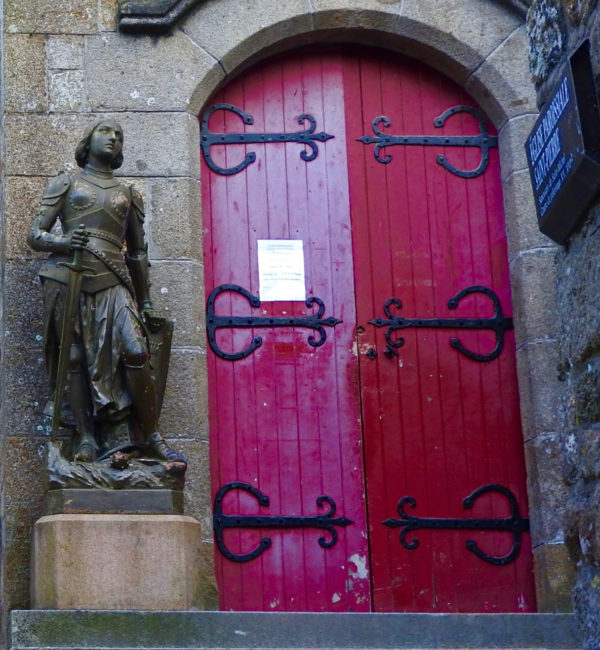
Statue of Joan of Arc beside the entrance to the Église-Saint-Pierre, the parish church at Mont-Saint-Michel. Archangel Michael played an especially important role in Joan’s story. She said he was one of the earliest saints to appear to her and inspire her mission to deliver France from English rule. Joan was also particularly moved by the French defense at the siege of Mont-Saint-Michel and drew further inspiration from this victory.
But the very wars that secured French control over Mont also led to its slow decline. After briefly being the recipient of much royal largesse, the Mont faded into strategic insignificance. It still contained a working abbey, which temporarily grew in popularity after the French victories against the English, but by the 16th century, the whole island community had gone into a sad decline. By the 1790s, when France’s revolutionary government turned the abbey into a prison, there weren’t many monks left to kick out. It wasn’t until the late 1800s that the French government recognized the site as vital to France’s national heritage and dedicated attention and resources to preserving it.
A bit too popular….
These days Mont-Saint-Michel is anything but deserted. Upwards of a million people visit each year, and, especially in summer, the crowds can be overwhelming. The steep and winding streets that lead up to the abbey steps are lined with tacky souvenir shops and faux-medieval kitsch. People complain that all this ruins the Mont’s charm and historic aura, but, personally, I found the crowds–coming both ways through those narrow streets–far more jarring (also tacky commercialism has a long and honored place in the history of pilgrimage routes).
I had wanted to see Mont-Saint-Michel since first learning about it in my fifth grade French class, but when planning my trip to Normandy, I hesitated. I was going to be there in July, the height of tourist season. The time when huge coaches converge on the Mont, disgorging hundreds of visitors and slowing traffic on the causeway bridge to a crawl. That really did not sound appealing.
I’m a little embarrassed at how long it took me to wonder if one could simply spend the night. For some reason it had never occurred to me that the Mont would have hotels. Once I figured that out, spending the night seemed not only sane and practical, but something that I really, really wanted to do.
Problem solved! The entrance to my little hotel, La Vieille Auberge, on the Mont. The reason for the odd angle (I took the photo from the top of a nearby flight of steps) was to get as much of the street as possible so I could find my way back after dark!
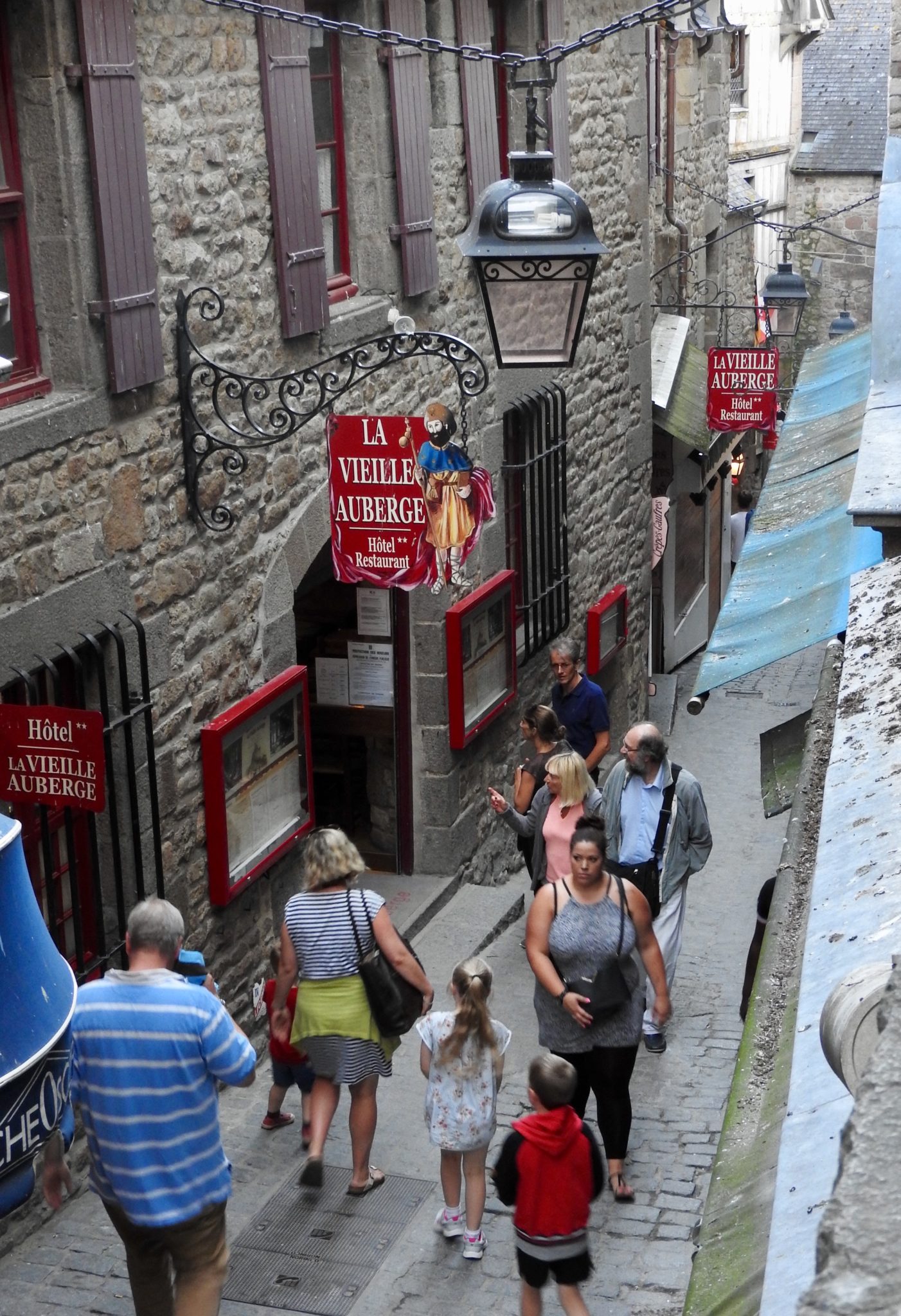
My plan was to arrive late in the afternoon, as most of the day trippers were departing, wander around to my heart’s content (the abbey is open late in summer), and take off the following morning–before the next day’s hoards put in an appearance. Apart from almost missing my 8:30 am check out, everything worked out beautifully.
The Mont’s magical transformation
Unless you know absolutely nothing about Mont-Saint-Michel, it’s hard to have anything but high expectations. Fortunately, the Mont doesn’t disappoint. From the first glimpse from the far end of the causeway, I was seized with a sense of awe that not even the crowds (which, were, indeed, clearing out as I arrived) could totally diminish. By 7:30 or 8 pm, though definitely still populated (not everybody was so slow on the uptake about spending the night), the Mont was beginning to transform.
Admittedly the magic doesn’t really kick in until you reach the abbey, although the walk up the winding paths to the abbey’s stone steps is not without its charms. The abbey was far from deserted during my visit, but the more I walked around, the more eerily disconnected I felt. And I don’t think it was just me. There were, probably, about 30-40 other visitors, but for the most part, everybody spoke in hushed tones. Even the kids were very well-behaved. Either I was surrounded by the world’s most considerate tourists, or I wasn’t alone in that feeling of otherworldliness.
Mont-Saint-Michel’s secret resident: A most indignant eagle
The only thing that pierced the strange calm was an intermittent screeching that seemed to come from inside the abbey. The sounds obviously came from a recording, but it was a good one, and at times it seemed as if there was a very, very angry bird somewhere very, very close by.
It turned out that the screeching, along with the jumbo-sized metal eagle heads, eyes, beaks, and talons (yes, talons!) one encountered in odd places, was part of a temporary exhibit called “The Secret Residents of the Abbey,” or something like that. Do you know what’s creepy? To be innocently glancing about and have you gaze suddenly fix on an eagle eye as big as your own head. You know what’s even more creepy? Coming face-to-face with an equally outsized talon or its menacing shadow.
I am still very “hmmmmm” about the whole experience. Later that night I heard a child shriek and wondered if the poor kid was having talon-related nightmares (also if I had seen Nightmare on Elm Street one too many times). It definitely added atmosphere…but atmosphere isn’t exactly in short supply at the abbey.
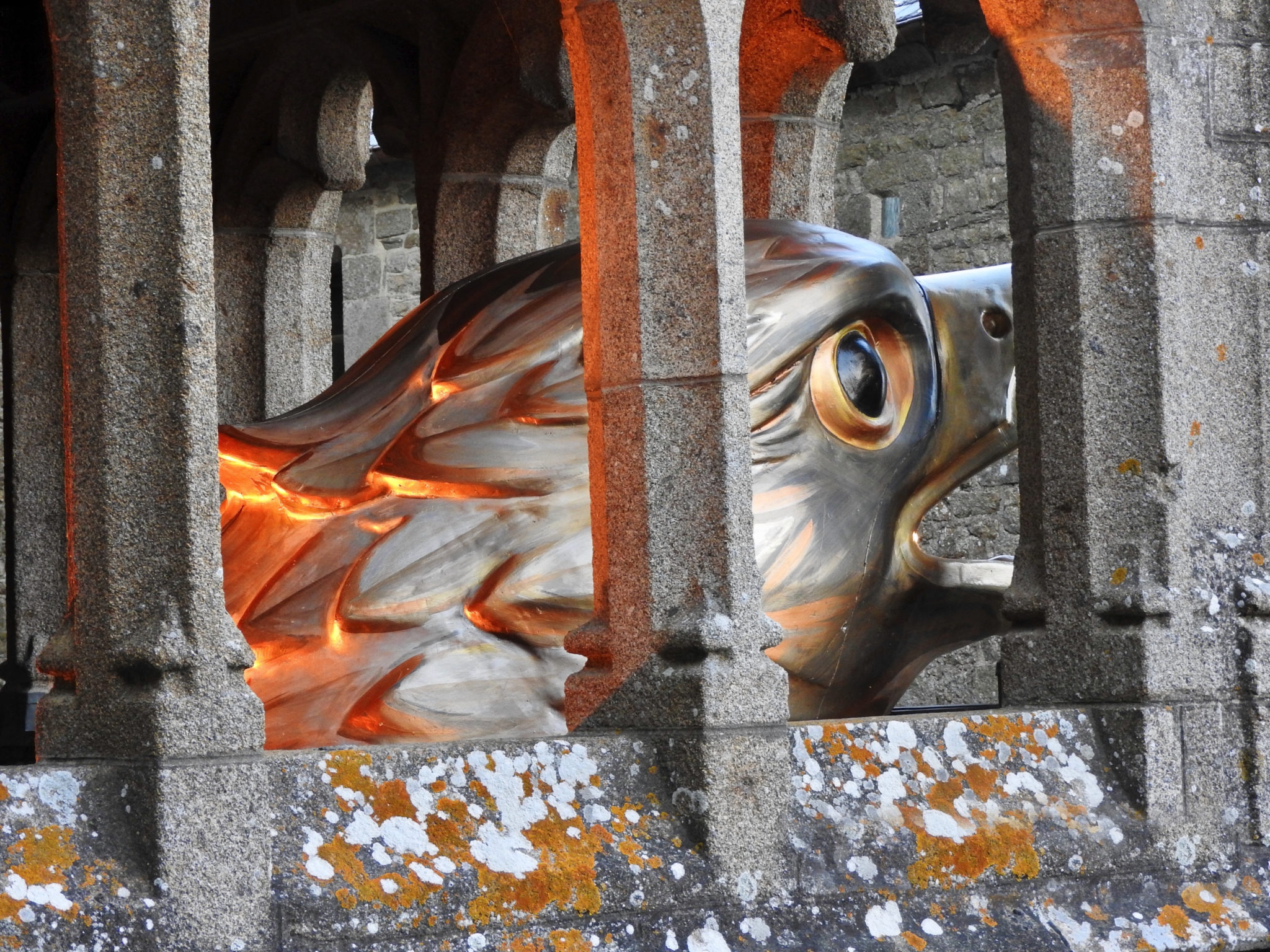
See? Even he doesn’t understand why he’s there! He’s probably just trying to get back to Imperial Rome!
This is doubly true during July and August, when the abbey puts on a nightly sound-and-lights show. I had expected “sound” to mean “music,” and was expecting choral music or something like that. But it was more like a series of sound effects–faint, thunderous, and everything in between–that played on a loop in concert with the lights (and interrupted periodically by eagle screeching). Having no idea about the special exhibit, I thought that the eagle business must be connected to the show and wondered at the curious combination. I can see why a soundtrack of some sort would be appealing, but it came across as gimmicky.
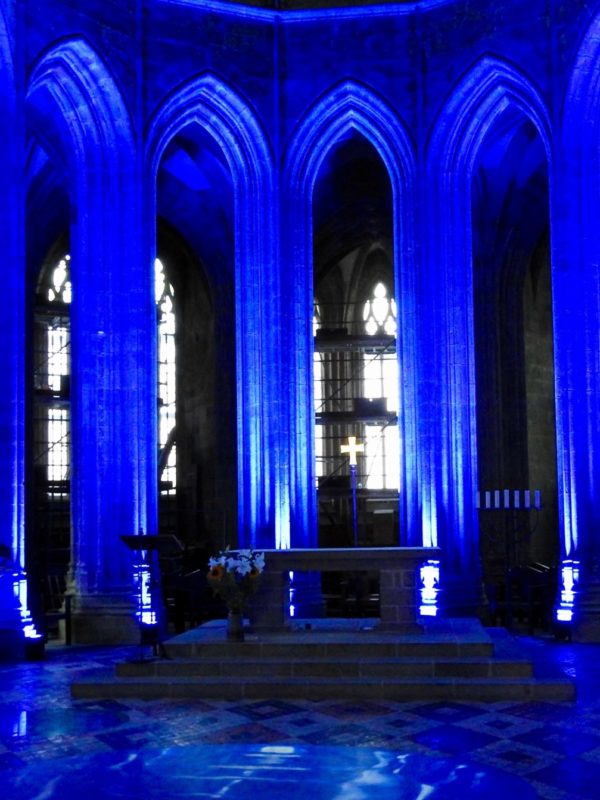
I could take or leave the sound effects, but the light show was cool. I wouldn’t say it was anything out of the ordinary, just different colors variously projected against ceilings, stone staircases, and through dark corridors, but it enhanced, rather than distracted from, the interiors.
Perhaps that’s why the cloister garden, the part of the interior that isn’t really “interior” at all–was my favorite part of the abbey. The garden was just lovely, and much smaller than I had expected. But something about the small size made it more affecting. I could picture the monks working and meditating there, as opposed to some other cloisters that are so huge they resemble the illegitimate offspring of a bullring and a football field.
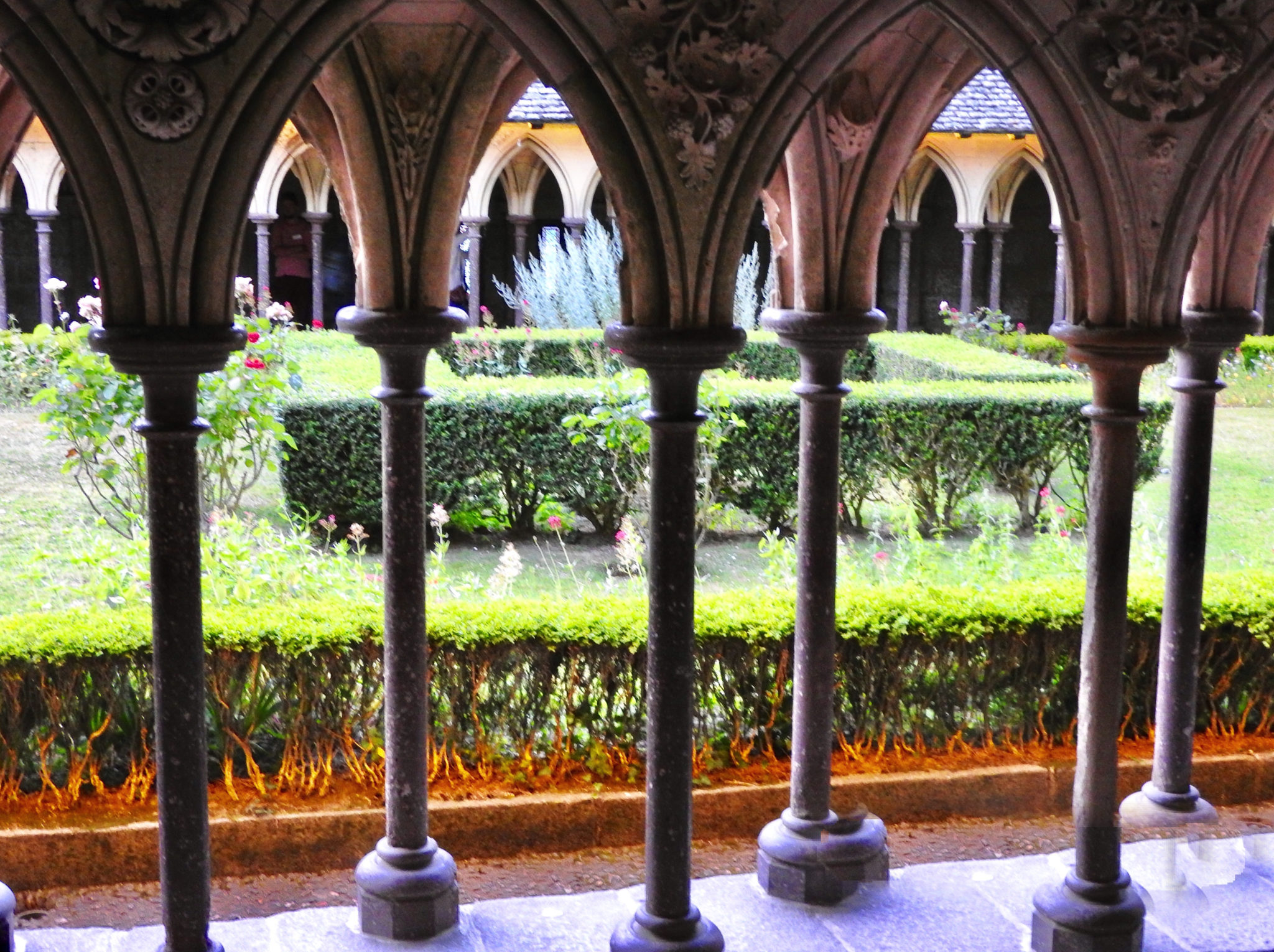
When the garden was restored in the 1960s, it was redesigned principally as a herb garden. This may be an accurate reflection of monastic life, as herbs were commonly used as medicines in the Middle Ages and monasteries were often places of healing, but it turns out it’s just a guess. According to the Garden History Reference Encyclopedia, there are actually no records of specific herbs cultivated in any monastic gardens.
The abbey is appropriately imposing, but to be honest, apart from the garden and the nave of the abbey church, the building itself made little lasting impression on me (maybe it shouldn’t go head-to-head with jumbo eagle talons). It’s not that the abbey isn’t impressive, it’s just that it can’t compete with the views from outside. Once you get out there, everything else is forgotten (even eagle talons).
More special effects in the abbey. I think this one looks like smoke swirling above the pits of Hell. Maybe irreverent thoughts like that were why the effects of the sounds and light were lost on me?
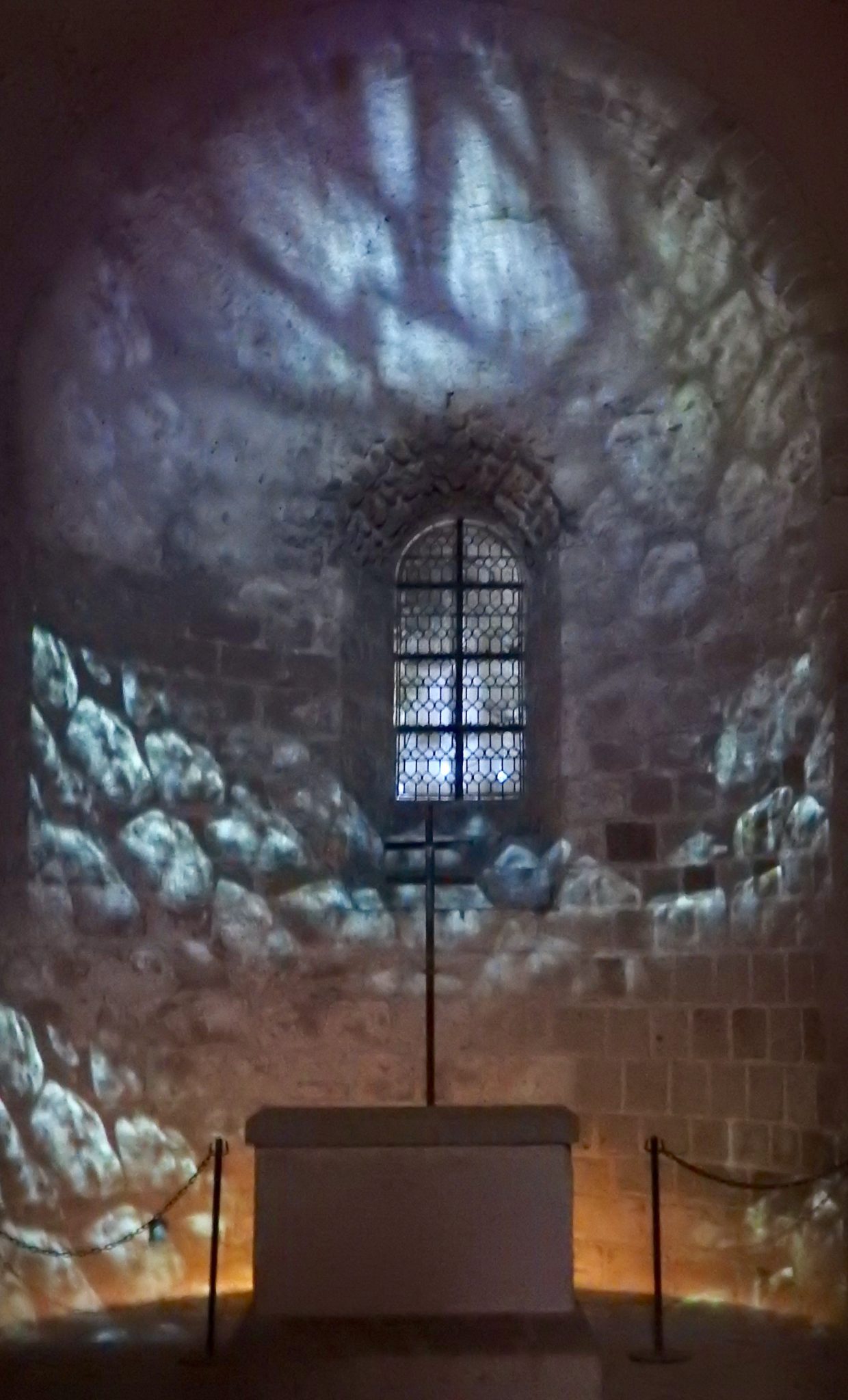
Standing on top of the world
Not really, of course. Standing on the abbey’s ramparts, you’re only about 500 feet above sea level, but the Mont’s steep incline, dramatic views, and equally dramatic expanse of sea or quicksand (depending on the time of day) really makes it feel that way.
When I first went out the ramparts, it was only about 9:30 pm and the tide was still out. While I would not have predicted that staring down at half a mile of sand would be particularly attractive or compelling, I really did find it hard to look away. The thought of centuries’ worth of pilgrims doggedly making their way across the treacherous sands to beg of Archangel Michael whatever it was they came to beg of him (as the patron saint of warriors and chivalry, and also claimed by the sick and the suffering, Michael would have had plenty of devotees in the Middle Ages), was surprisingly affecting.
According to the time stamps on my photos, I went back and forth between the ramparts and the interior of the abbey at least three times. With the light fading and the tide slowly coming in, the view changed noticeably every 10 to 15 minutes. It had been a long day and by 10 pm I was exhausted, but I kept wanting one last look.
Two dizzying views, looking straight down from the ramparts.
I finally took off around 10:20. Instead of retracing your way down the abbey’s stone steps, visitors depart via a path that winds its way toward the little town. This is a pretty walk in itself, since you get multiple views of the water and at various times are standing above, parallel to, or just beneath the bushes and trees.
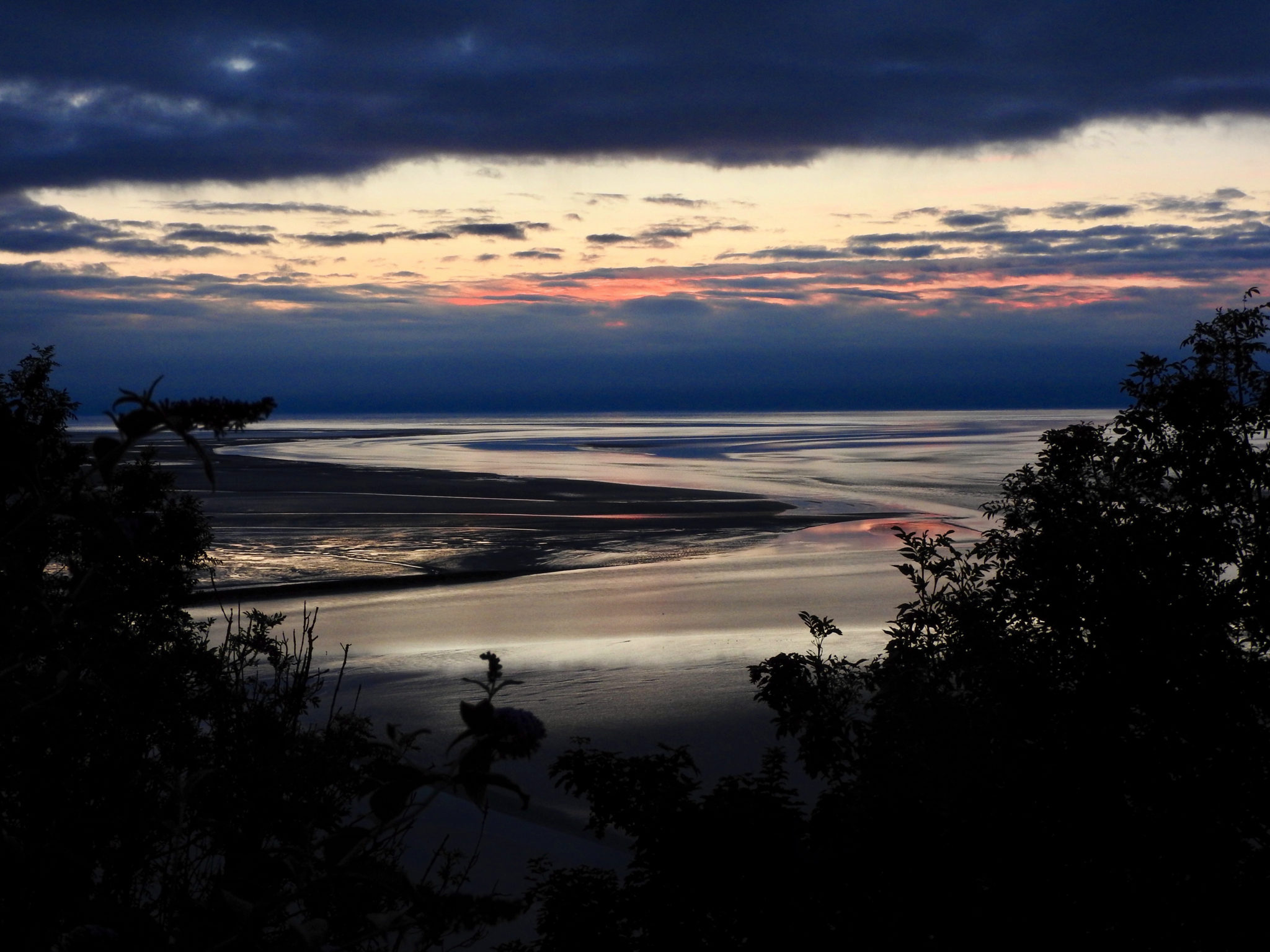
Two views of the sunset while walking back down the hill. Above, from the east at 10:25 pm, and below, from the west, two minutes later.
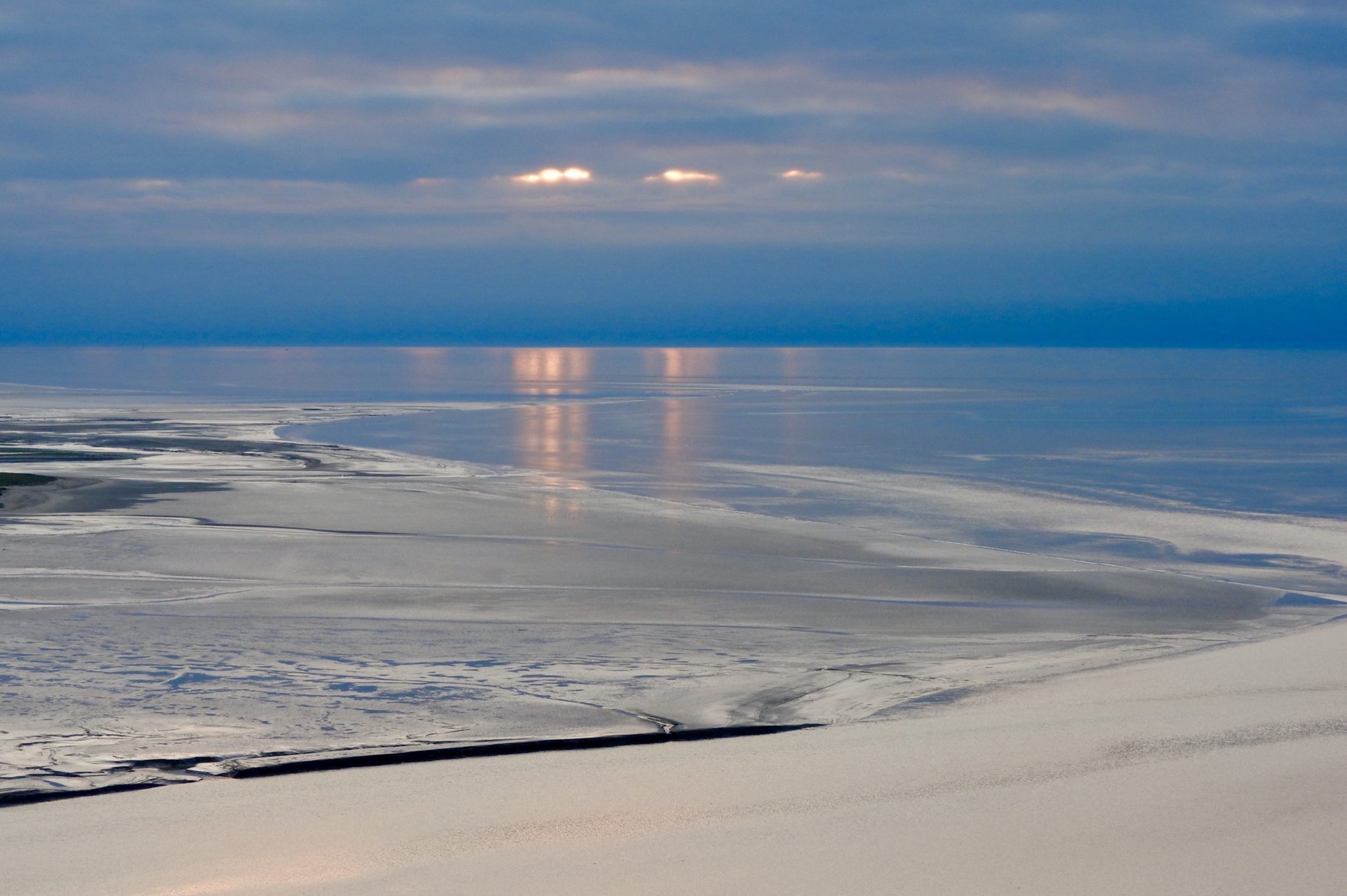
By the time I got back to the town, I was aching from all the walking, climbing, and contorting into odd, photo-friendly positions, but I had one last stop to make before going back to the hotel.
Exiting the town through its medieval gate, I trekked across the causeway bridge to take in the breathtaking sight of the entire Mont after dark. As I was practically asleep on my feet, I only stayed for about 15 minutes, but it was so stunning that I could have stayed indefinitely. I feel like a broken record, but the entire Mont-Saint-Michel experience is really one mesmerizing sight after another.
Visiting the Mont: Tips for Tourists and Would-be Time Travelers
If you want to be able to take your time and experience the Mont’s eerie otherworldliness, I encourage you to spend the night. But if you can’t or just prefer a briefer, more general experience, you can do the entire Mont in a few hours.
(Allow me to interject that, for all my rhapsodizing, there is nothing wrong with being happy with a quick “drive by” visit to the Mont, or to any other place for that matter. Nobody is wholeheartedly so overwhelmed “I am literally drooling all over the place”-level fascinated with every site. We all have places on our bucket lists with which we’re really fine just seeing briefly, snapping a few pictures, and being able to say, “Yup, I was there.” Anybody who says otherwise is being pretentious and needs to get over themselves. They probably also kick puppies.)
Where to stay
The Mont itself has several small hotels and guesthouses and, based on my own experience and on reading a lot of online reviews, the budget options are fine, and that’s about it. Hoteliers know they are offering a scarce resource and behave (and charge) accordingly.
I stayed at La Vieille Auberge, which is just off the main street, and paid about €130 for a basic single room with ensuite bath. The room was drab but clean, with unexpected free wifi. My only real complaint was how stuffy it got. Because the window looks out onto the uneven rooftops around it, there was very little breeze. Opening the window did little more than let flies and some other insects in. Breakfast was an additional €10 and was fine but unmemorable.
But you don’t have to stay on the Mont. There are several hotels nearby on the mainland, and there’s something to be said for staying there, especially if you have a car. The only visitor parking at the Mont is off the island (though you can leave your car overnight and walk or catch the bus to the Mont itself).
Because I stayed on the Mont, I only have second-hand knowledge, but for what it’s worth, my impression of these hotels is that they’re basic and fine, not unlike the ones on the Mont. Staying on the mainland won’t get in your way of exploring the Mont at night, as the free shuttle bus, the Navette, runs until after midnight. Just be sure that whatever accommodation you pick is on your preferred side of the bay. Some of the descriptions of the mainland accommodations are not very clear, so read carefully.
The hotel situation may be indifferent, but there is good dining to be had at the Mont, and for a reasonable price given the location. I ate dinner in the restaurant of the Hotel du Guesclin. I ordered off the prix fixe menu–three courses and wine for €27.50–and thought everything was very tasty. The view from the dining room was also wonderful and I kept slipping out to the balcony for a peek. (By the way, if you’re looking for a splurge, and book early enough, this hotel is more upscale and well-reviewed.)
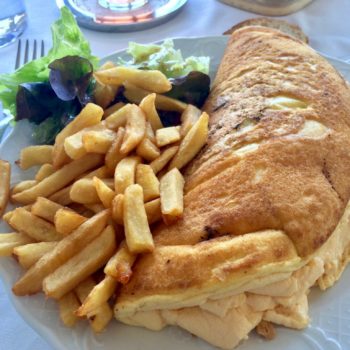
I don’t even like omelets very much, but I thought this one was delicious. There were two other main courses to choose from, fresh scallops (which, based on a glance at a nearby table, looked amazing, but alas, I am allergic) and mutton, I think. I had onion soup for my first course, and a chocolate mousse tart for dessert.
Getting to the Mont (via public transport)
The trip from Paris is straightforward, though a little on the long side. The fastest and most efficient method is to take the TGV train from Paris (Gare Montparnasse) to Rennes. At Rennes, breathe the Breton air for 30 seconds and then board the Keolis bus–on the Rennes-Mont-Saint-Michel-Dol de Bretagne route–which takes you directly to the Mont’s parking lot on the mainland side of the causeway bridge.
Don’t worry about finding the bus. It is right around the corner from the Rennes train station, but if you do get turned around, just ask somebody. If your French is minimal, a polite “Mont-Saint-Michel?” will get the point across. Also, odds are you won’t be the only person on your train heading toward the bus. All told, the trip takes about four hours (three for the train and one for the bus).
If the train is late, they might hold the bus for a little while, but it’s not guaranteed (in my case, my train was about 15 minutes late, and they did hold it, but the bus driver was very impatient to get going and told a passenger he wouldn’t wait for her to use to bathroom). The bus itself is a regular coach with reasonably comfortable seats. The most memorable part of the journey was when “Hotel California” came on the radio.

Unfortunately there is not enough time between arriving in Rennes and catching the Keolis bus to take even a quick look at the city (unless you want to wait four hours for the next bus), so I contented myself with this super-sophisticated photo from inside the bus.
The nearest town to the Mont, Pontorson, can be reached by train, but this is not the route I would recommend. The trains from Paris are indirect and run at odd times, and once there you still need to find a taxi or public bus to go the remaining five miles to the Mont. The Keolis bus is much simpler, and timed to meet Mont-bound passengers from the Paris-Rennes train. (The Pontorson route works better if you are traveling locally within Normandy. I used it when leaving the Mont for Bayeux and it was a piece of cake.)
You could, if you really wanted to, visit Mont-Saint-Michel as a day trip from Paris. You would just consult the bus and train schedules and do the Paris/Rennes/Keolis trip in reverse. But I wouldn’t recommend it. It would make for a very long day with eight hours, round trip, of travel. Plus, you’d only get about six hours on the Mont and be there at peak tourist time. Just my two cents….
Have you visited Mont-Saint-Michel? Would you like to? And have you ever encountered a random eagle head/beak/talons art exhibit? If so, please let me know. It would be nice to get some advance warning.

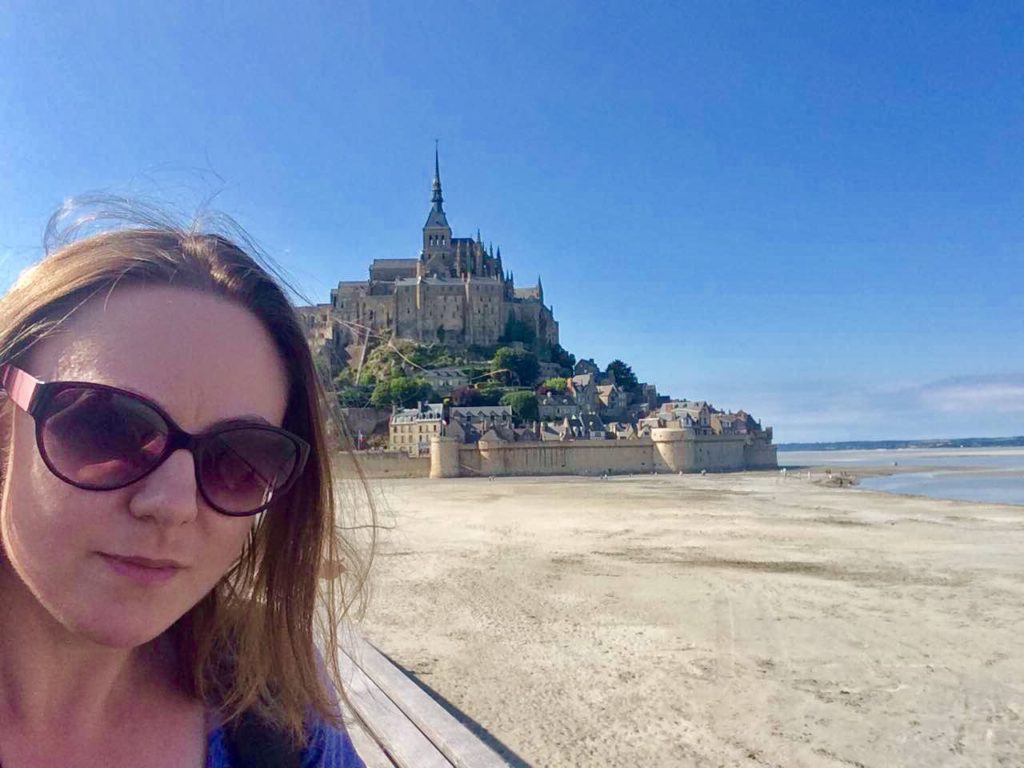
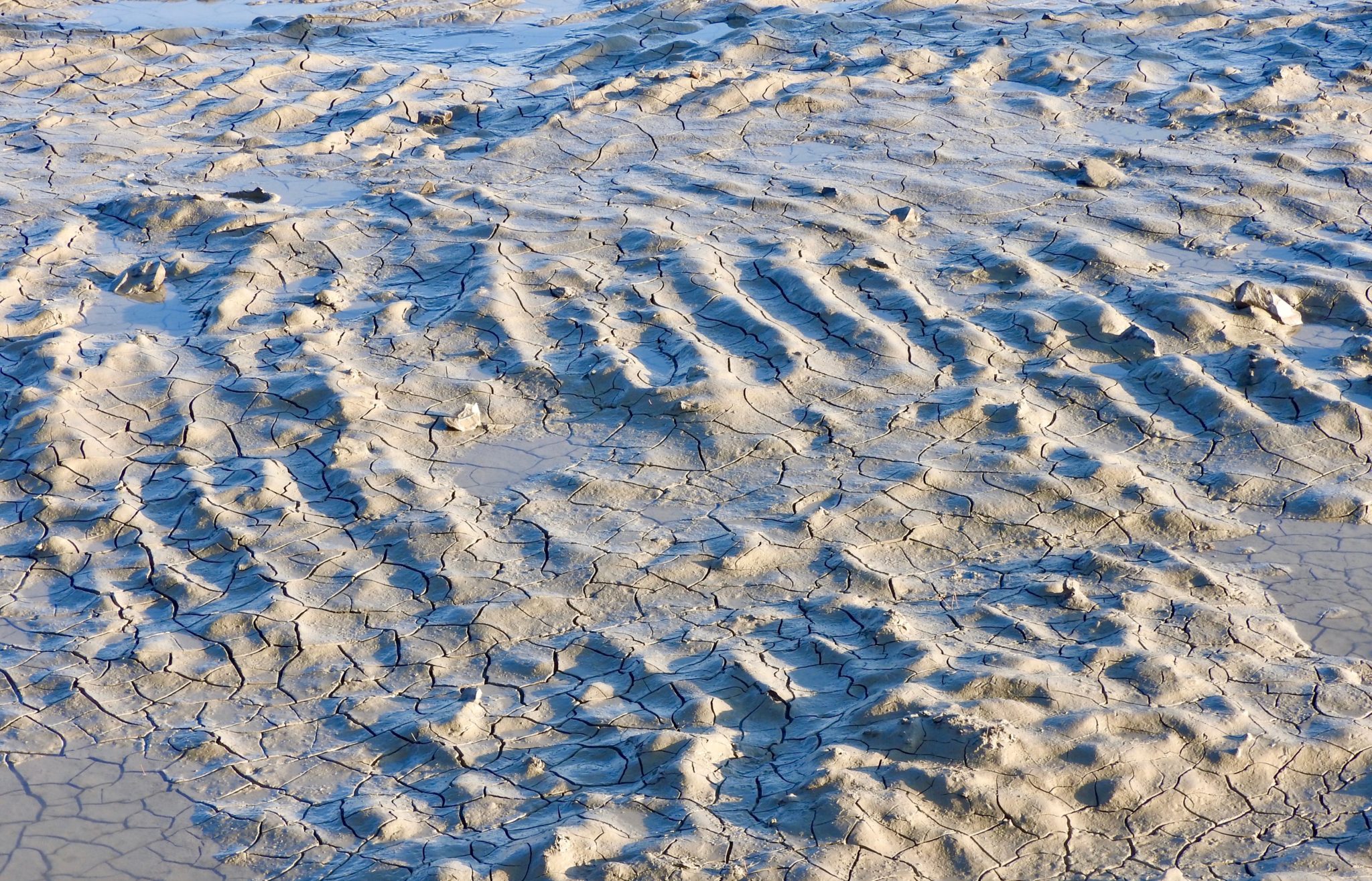

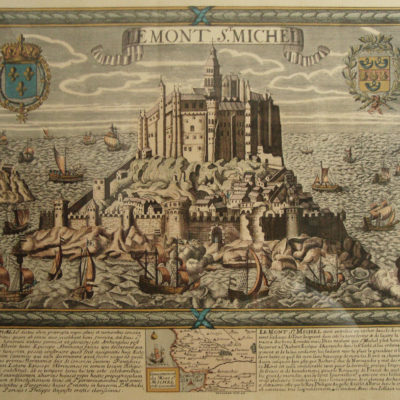
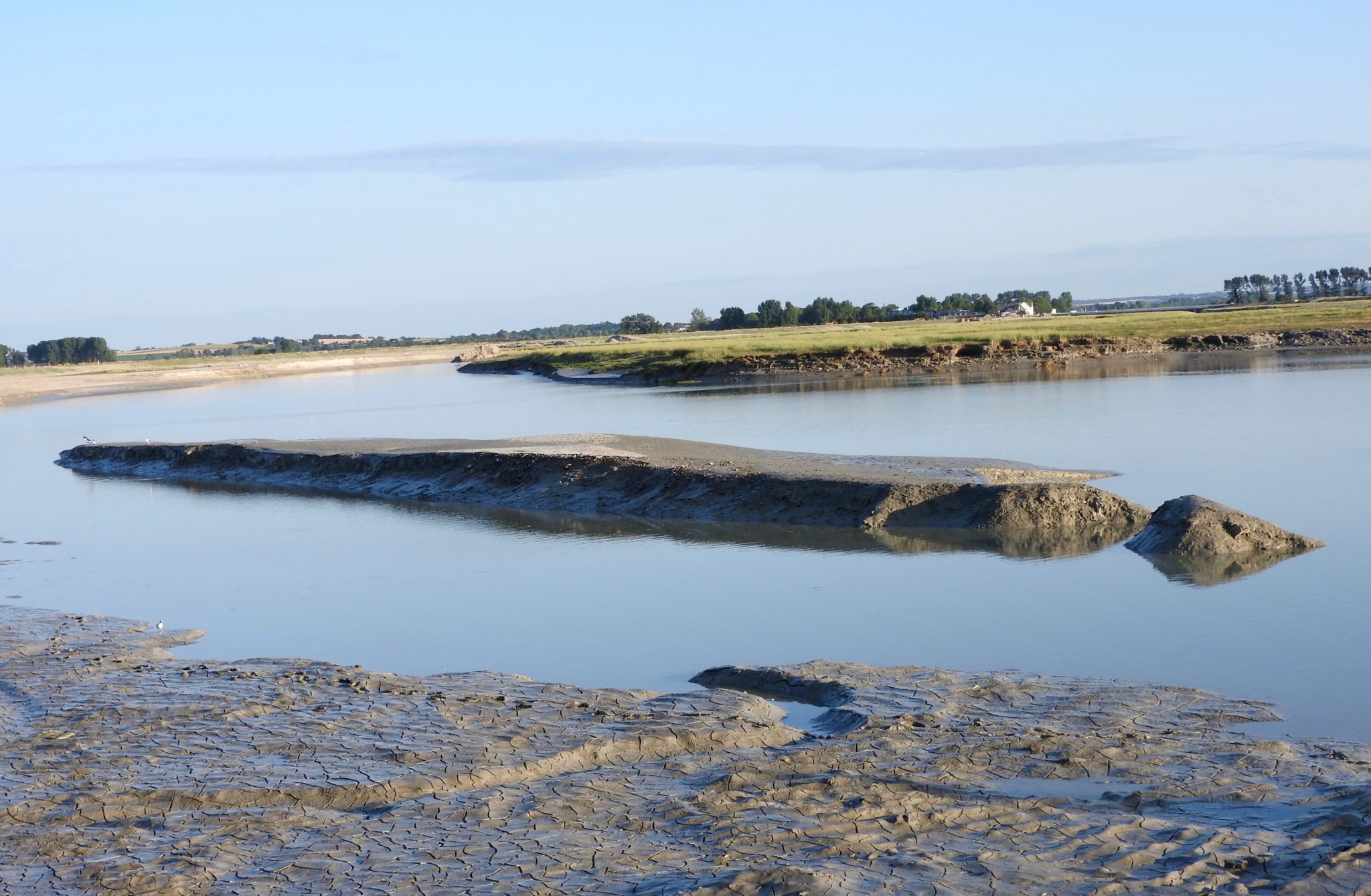
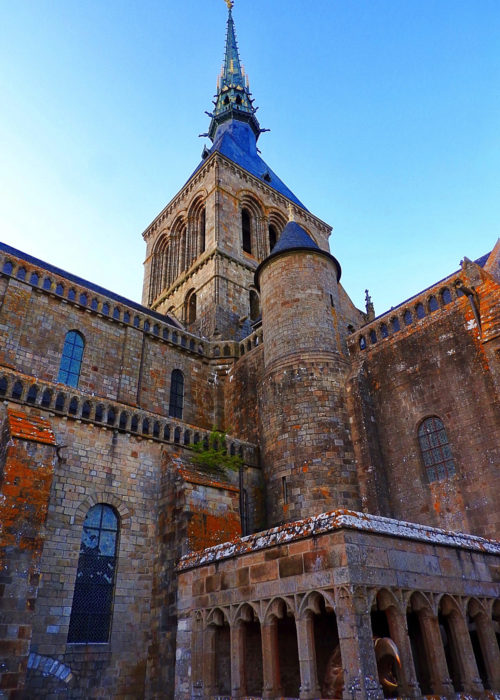
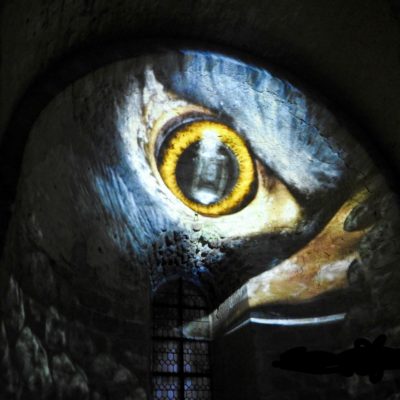
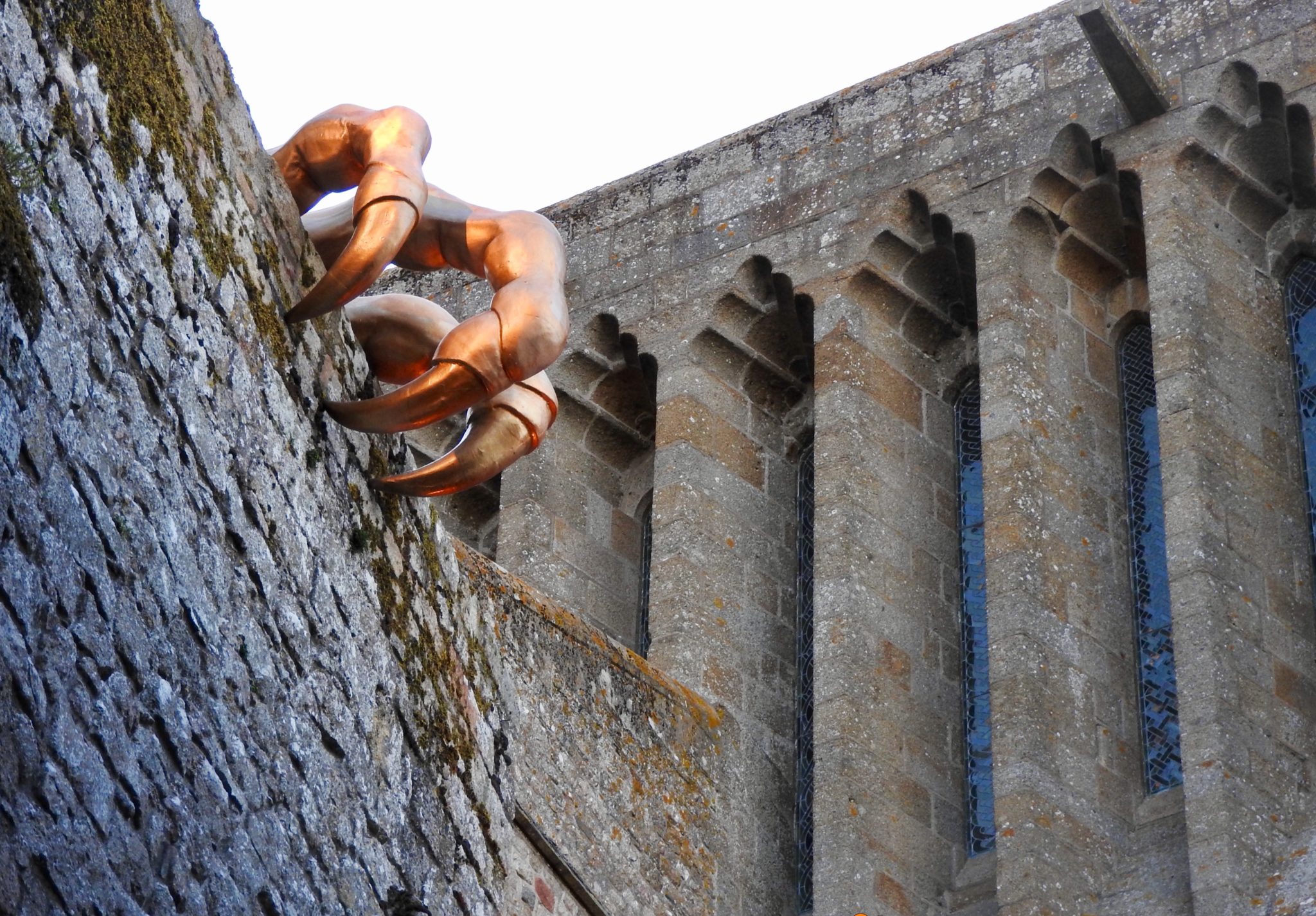
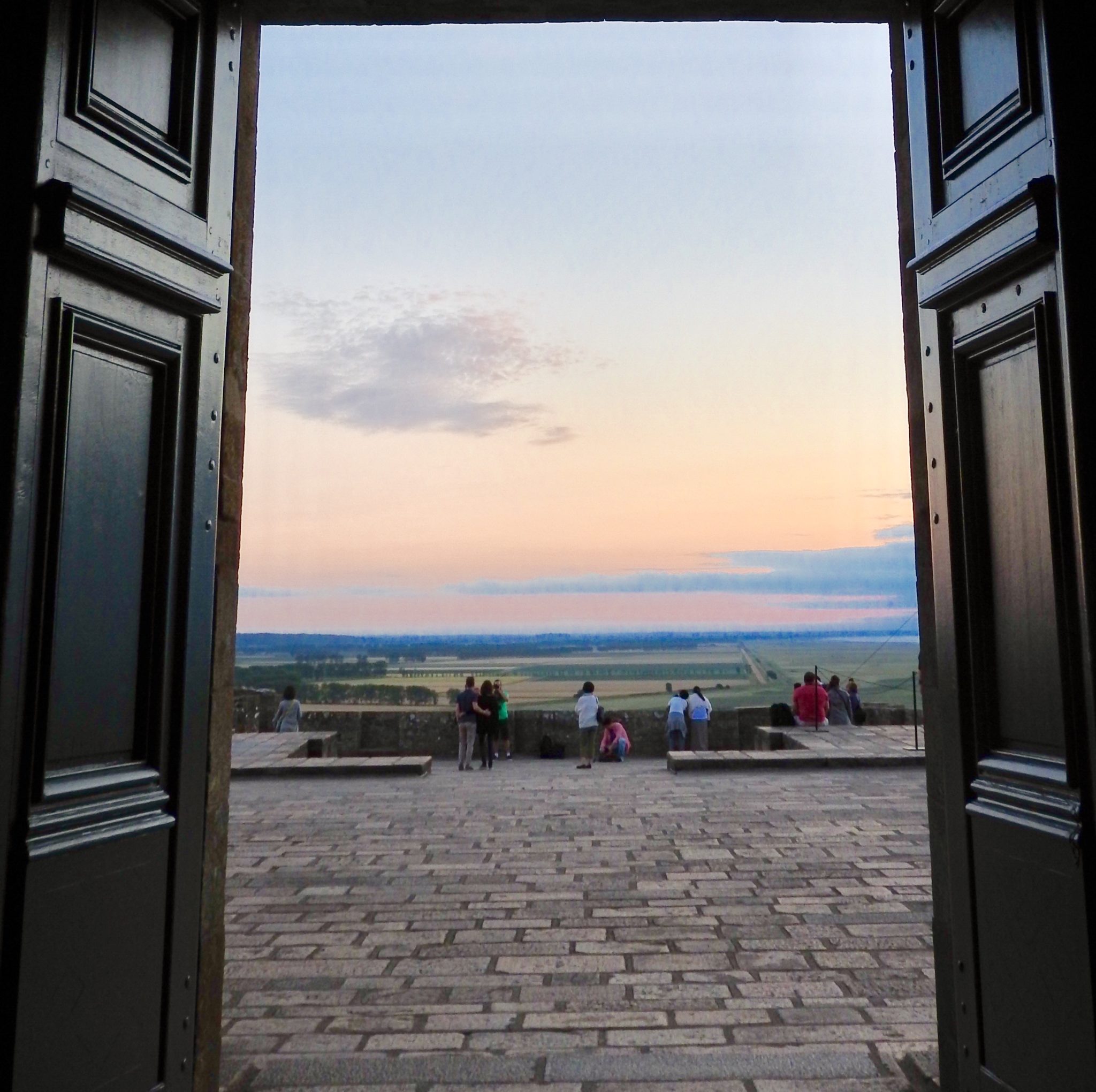
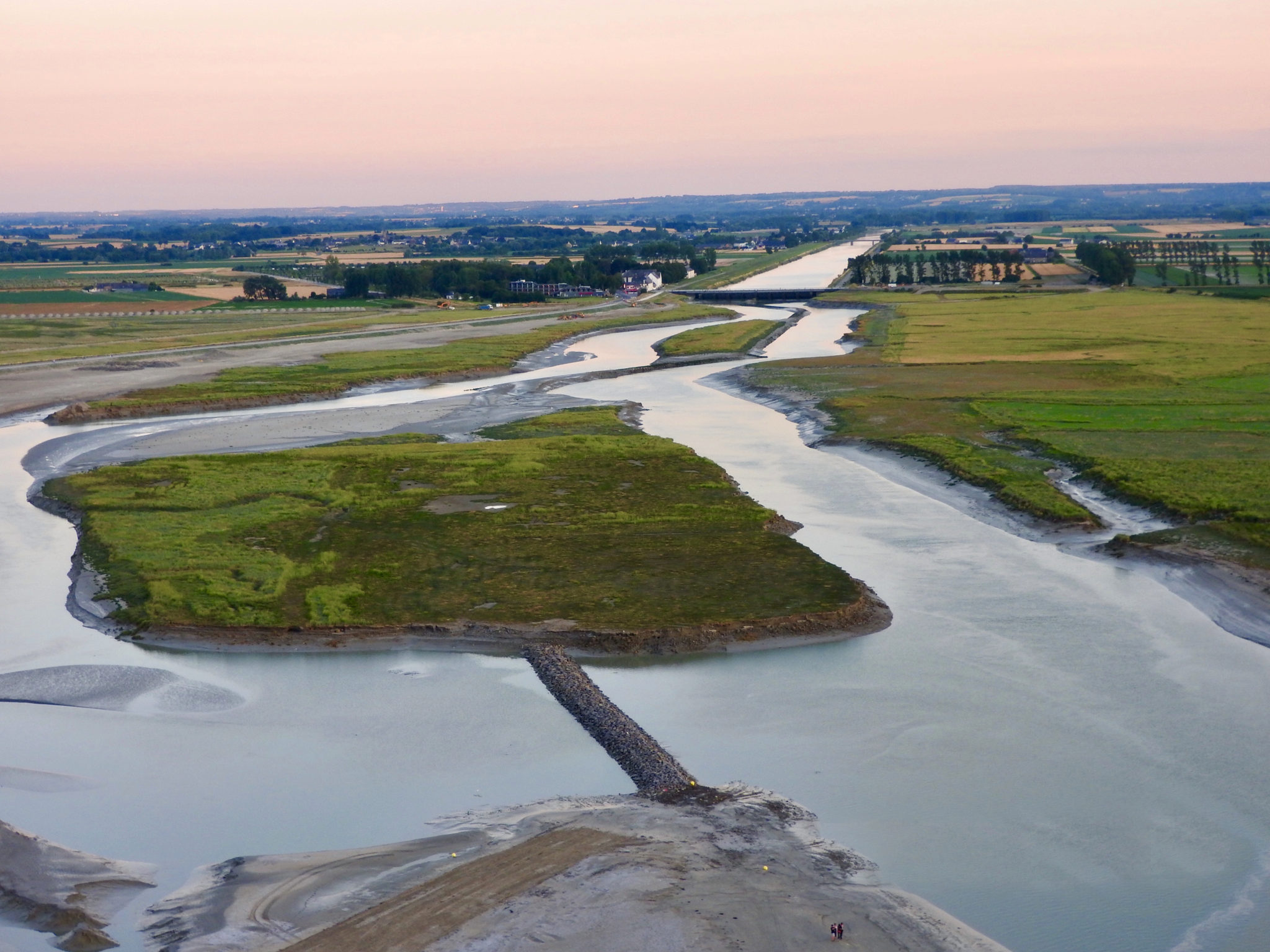
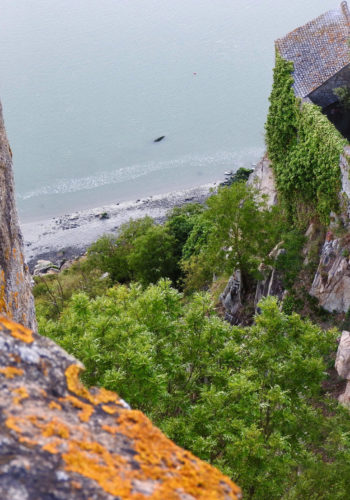
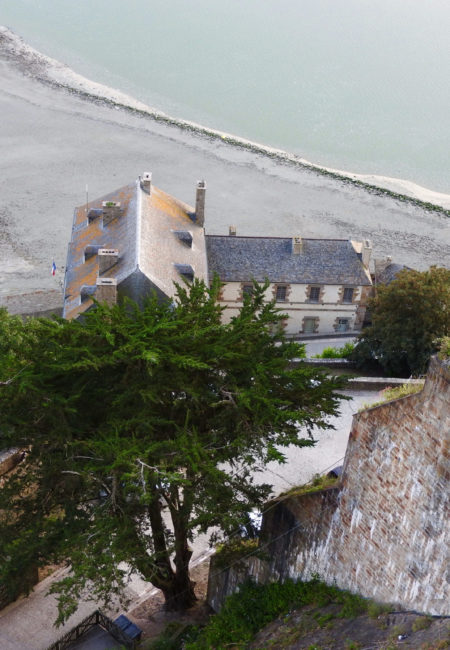
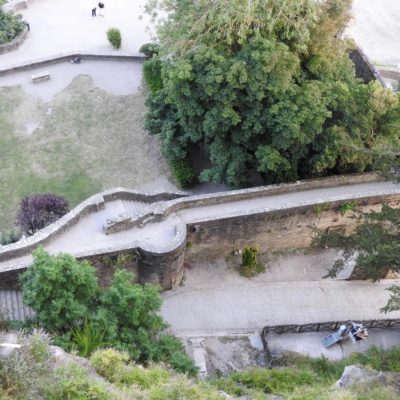
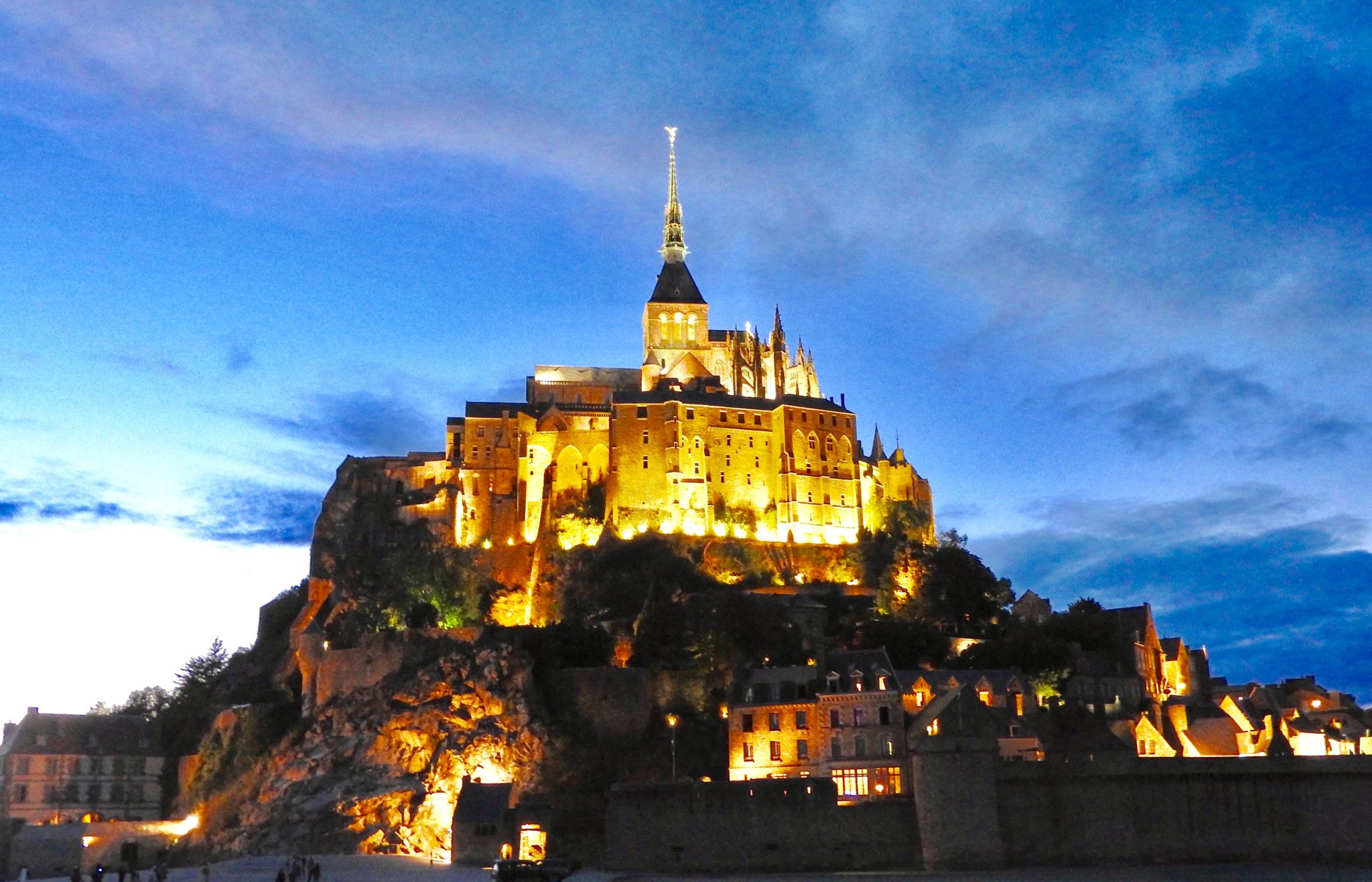
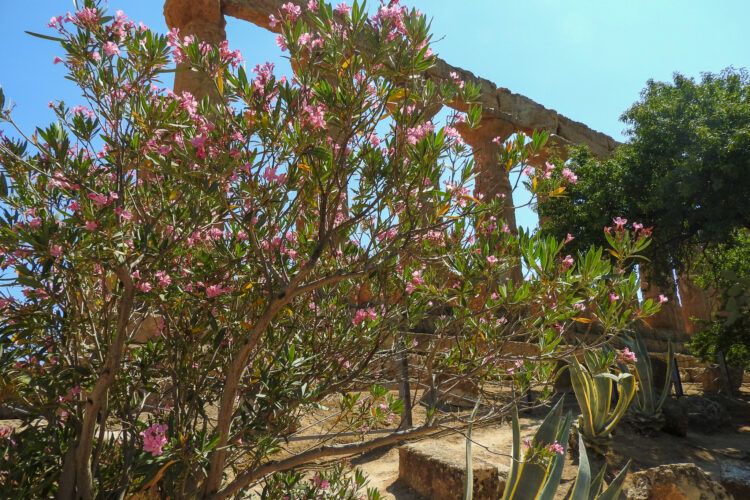
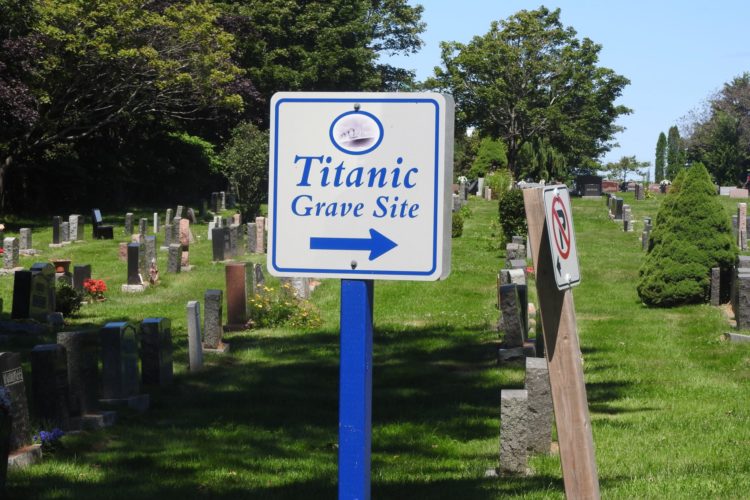
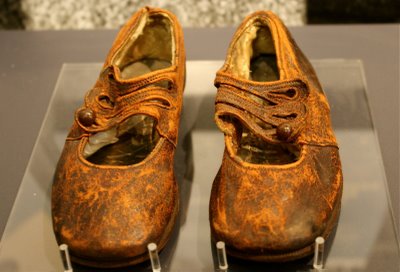
Enjoyed your narrative, makes me want to see it.
Hello Richard,
Thanks for commenting! I’m glad you enjoyed the post and hope you are able to make it MSM at some point. All of Normandy, in fact, is well worth a visit. I hope to get back there myself!